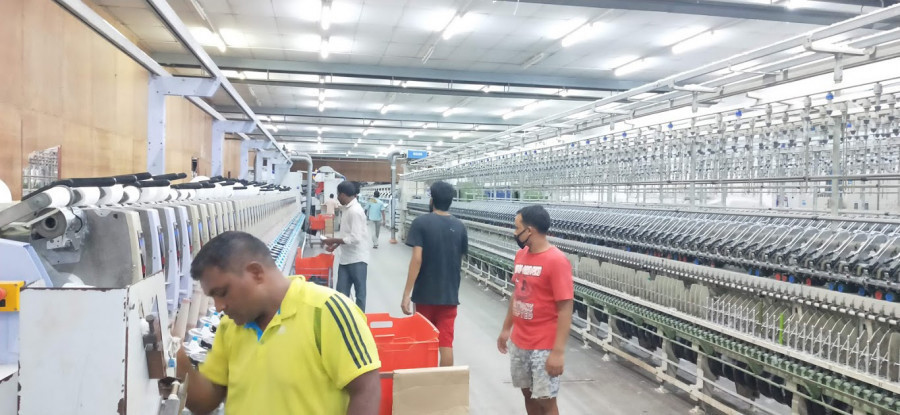Money
Sunsari-Morang sees 20,000 workers laid off as lockdown chokes factories
The industrial heartland in the eastern region is home to 500 factories which employ around 50,000 persons.
Binod Bhandari
More than 20,000 workers in the Sunsari-Morang industrial corridor were laid off after almost half of the factories shuttered amid the lockdown.
The prohibitory orders have lasted more than four weeks, and the industries and businesses here are still uncertain about what lies ahead.
The industrial heartland in the eastern region is home to 500 big and small factories which employ around 50,000 persons. Around 200 factories have shut down totally due to the impact of the second wave of the coronavirus outbreak.
"Only 60 percent of the factories are open, but they are operating only partially due to the virus restrictions," said Suyash Pyakurel, president of the Chamber of Industries Morang. "We estimate that around 20,000 workers have lost their jobs.”
He added that these plants had cut production by 60 percent as consumption had fallen sharply with the markets all closed.
“The factories producing essential goods too are not operating fully. We estimate that they are operating at 80 percent of capacity,” he said.
Rajendra Raut, central member of the Federation of Nepalese Chambers of Commerce and Industry, said that the factories were operating at 50 percent of capacity on average.
"Factories which require oxygen in their production processes have closed down completely as the government has commandeered all the stock and sent it to hospitals where it is badly needed,” he said.
"Many factories that have been operating by following the safety protocols are unable to ship their products to market, and unsold inventory is piling up in their warehouses," Raut added.
Prakash Mundada, president of the Morang Merchant Association, said that the production of non-essential goods had declined. "Non-essential products have not been able to reach the market."
The factories in the industrial area were producing more than Rs1 billion worth of goods daily before the lockdown.
In normal times, the government would collect Rs150 million daily in customs duties on raw materials and manufactured goods. The government also earned Rs350 million in excise duty, Rs110 million in value added tax and Rs270 million in income tax monthly.
After the lockdown was clamped in the region, the revenue collection of Biratnagar Customs plunged from Rs170 million to Rs50 million daily.
The government has allowed factories to operate if they house their workers within the premises, but for many of the enterprises it is not possible to feed and accommodate hundreds of workers, according to traders. “It is not easy for the workers to commute to the factory due to the travel restrictions.”
The government has set several conditions for operating factories during the lockdown period which include keeping all employees on the premises and feeding and housing them, maintaining physical distance between people, checking the health of all workers daily for fever, and using masks and sanitisers. In case workers become infected, they should be put in isolation.
Traders and industrialists are worried due to the extended lockdown. It was becoming difficult to keep the factories running due to the prohibitory order which has strangled the supply chain, they said.
According to a follow-up survey report on the impact of Covid-19 on the economy released by Nepal Rastra Bank, significant improvements had been seen in the operation of trade and industry in mid-April 2021 as compared to mid-July last year.
Production, trade and employment had been gradually rebounding before a second lockdown halted the recovery in its tracks.
The second wave of the pandemic that forced the government to issue prohibitory orders on April 29 to prevent the spread of the coronavirus again hit business activities.
According to the Central Bureau of Statistics, the country’s economic growth rate, or output of the gross domestic product, plunged by 15.4 percent in the fourth quarter of the last fiscal year 2019-20 compared to the same period in 2018-19, resulting in a year-on-year negative growth rate of 2.1 percent.
The economic growth rate contracted by -4.6 percent in the first quarter of the current fiscal year 2020-21 as compared to the same period in the last fiscal year.




 13.12°C Kathmandu
13.12°C Kathmandu














